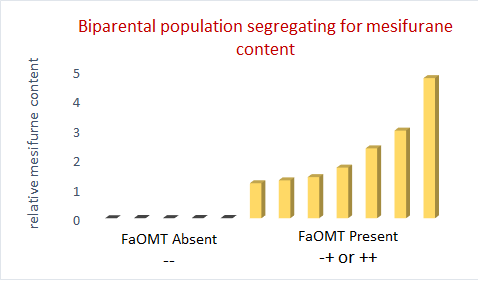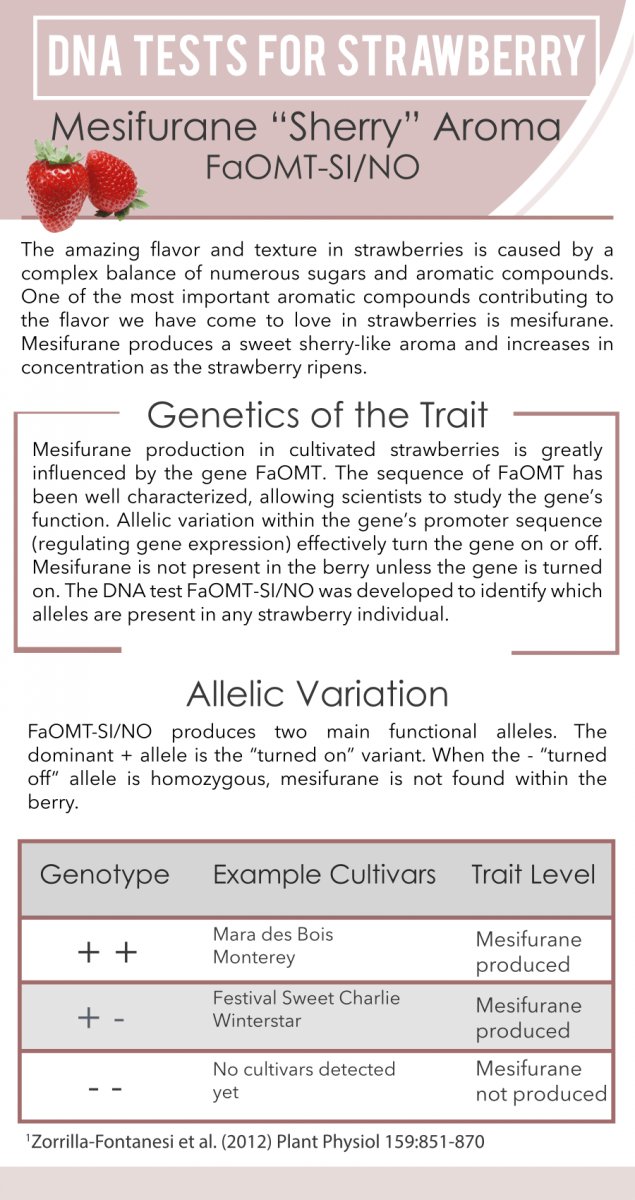Mesifurane “Sherry” Aroma FaOMT-SI/NO
The amazing flavor and texture in strawberries is caused by a complex balance of numerous sugars and aromatic compounds. One of the most important aromatic compounds contributing to the flavor we have come to love in strawberries is mesifurane. Mesifurane produces a sweet sherry-like aroma and increases in concentration as the strawberry ripens.
Genetics
Mesifurane production in cultivated strawberries is greatly influenced by the gene FaOMT. The sequence of FaOMT has been well characterized, allowing scientists to study the gene’s function1. Allelic variation within the gene’s promoter sequence (regulating gene expression) effectively turn the gene on or off. Mesifurane is not present in the berry unless the gene is turned on. The DNA test FaOMT-SI/NO was developed to identify which alleles are present in any strawberry individual.
Predictive Capacity
This DNA test is 100% accurate at detecting the presence of a functional FaOMT gene. However, other genetic and environmental factors can influence the amount of mesifurane found in berries. The non-functional allele is probably common in breeding germplasm. Without testing parents or seedlings, field plantings of seedlings without mesifurane might commonly occur.
When to Assay
The FaOMT-SI/NO test is particularly useful for choosing parents that impart mesifurane to seedlings for a desired flavor profile. Early seedling selection is also enabled with this test.
Allelic State of Example Cultivars
| Genotype | Example Cultivars | Trait Level |
|---|---|---|
|
++ |
Mara des Bois Monterey | mesifurane produced |
|
-+ |
Festival Sweet Charlie Winterstar | mesifurane produced |
|
- - |
no cultivars detected yet | mesifurane not produced |

Alleles Available
FaOMT-SI/NO produces two main functional alleles. The dominant + allele is the “turned on” variant. When the - “turned off” allele is homozygous, mesifurane is not found within the berry.
Technical Details
FaOMT-SI/NO is a simple PCR-based test. Products of the primer pair can be readily separated by 3% agarose gel electrophoresis or finer-scale platforms. This test has been successfully combined with the qFaFAD1 DNA test for “fruity” aroma (γ-decalactone).

